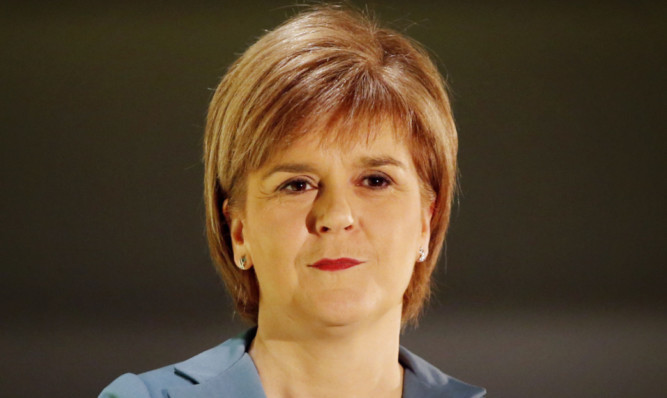I know he is a talented general but is he a lucky one?”
So Napoleon famously remarked about his generals.
The last two weeks tells us that his adage may also apply to our own First Minister, Nicola Sturgeon. She is a brilliant politician certainly but also it appears a lucky one.
Nicola’s chief source of luck is in her opponents. In the space of a few days both Labour and Tory Parties have delivered a clear and dominating election theme into Nicola’s capable hands. They have virtually presented her with the Scottish election.
First the Tory London Treasury were caught making a clumsy attempt to fiddle Scotland’s finances.
Then the Labour Party suggested a tax rise for working people. Why either of these parties thought they could get away with such tactics on the eve of an election is beyond comprehension. Instead they have delivered Ms Sturgeon, already in a commanding position, an unbeatable platform for the forthcoming Scottish elections.
The Scotland Bill “fiscal framework” debate has been on slow burn for the last few months.
However it has now caught alight with a vengeance. In the blue saltire corner is Scottish Finance Minister, “honest John” Swinney. In the red, white and blue corner is Tory Chancellor “slippery Gideon” Osborne.
The underlying issues are serious, both in terms of the money but even more so in terms of the principle at issue.
In the last desperate days of the referendum campaign with the Yes campaign on the brink of victory the Westminster parties issued a last ditch attempt to convince people to vote No.
It was too important to be a mere promise and so it was called “a Vow”. The “Vow” was that Scotland would be delivered of huge powers of “devo to the max”, “home rule” or “near federalism” and keep the Barnett formula on Scotland’s spending. Too good to be true? Turns out it was!
With the vote safely in the Westminster bag, the “Vow” started to be watered down under the resultant Smith Commission and that realisation was one reason for the total rout of the unionist parties at last year’s general election. This was not the fault of the estimable Robert Smith.
The all-party commission was forced to proceed at the pace of the slowest ship in the convoy and the unionist parties refused to sign up for anything that could be said to resemble “home rule” never mind “near federalism”.
However, Smith himself did insist on one crucial protection for Scotland and that was that any proposals on financial devolution should be delivered with “no detriment” to either side that there should be no financial advantage or disadvantage just by the delivery of additional powers.
Professor Anton Muscatelli, principal of Glasgow University, calculated a potential loss to Scotland of as much as £7 billion over a 10-year period certainly but still a fair amount of change and in total conflict with the “no detriment” principle.
At issue is whether future reductions from the Scottish Budget should follow the “Levels Deduction” system favoured by the Treasury or the “Per Capita Indexed Deduction” method proposed by the Scottish Government.
For the Tories in Scotland it is a PR disaster. After years of trying to shake off their anti-Scottish image, and months of boasting that they could catch Labour for second place, they have been caught with their sticky fingers well and truly stuck in the cookie jar.
Now also entering from stage right comes a totally gormless Labour Party.
Desperate to find an issue any issue on which to fight the election campaign they have proposed a general increase in the new 10 pence rate of income taxation. This 1p tax grab would hit 2.2 million basic rate taxpayers including almost 500,000 pensioners.
Even if we leave to one side the embarrassing fact that just a few weeks ago Labour were arguing against this move, forget that they are proposing a tax rise for people on incomes of £11,000 and upwards and also ignore their total inability to explain how their rebate system would work this is still a completely crazy policy.
It means that Labour’s “answer” to Tory austerity is to transfer the burden onto Scottish workers. Higher tax on working people is not an end to austerity. It is an example of austerity. That misunderstanding is at the heart of Labour’s muddle.
The Scottish Government should stand firm against the Tory fiddle and Labour’s muddle. Instead Nicola Sturgeon should take her case to the country, ask the people for their support and thank the gods of politics for her luck in having two such kamikaze opponents.
